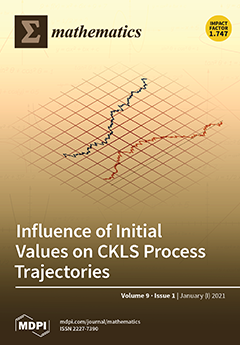Dedicated to the memory of Professor Richard Askey (1933–2019) and to pay tribute to the Bateman Project. Harry Bateman planned his “shoe-boxes” project (accomplished after his death as
Higher Transcendental Functions, Vols. 1–3, 1953–1955, under the editorship by A. Erdélyi) as
[...] Read more.
Dedicated to the memory of Professor Richard Askey (1933–2019) and to pay tribute to the Bateman Project. Harry Bateman planned his “shoe-boxes” project (accomplished after his death as
Higher Transcendental Functions, Vols. 1–3, 1953–1955, under the editorship by A. Erdélyi) as a “
Guide to the Functions”. This inspired the author to use the modified title of the present survey. Most of the standard (classical) Special Functions are representable in terms of the Meijer
G-function and, specially, of the generalized hypergeometric functions
. These appeared as solutions of differential equations in mathematical physics and other applied sciences that are of integer order, usually of second order. However, recently, mathematical models of fractional order are preferred because they reflect more adequately the nature and various social events, and these needs attracted attention to
“new” classes of special functions as their solutions, the so-called
Special Functions of Fractional Calculus (SF of FC). Generally, under this notion, we have in mind the Fox
H-functions, their most widely used cases of the Wright generalized hypergeometric functions
and, in particular, the Mittag–Leffler type functions, among them the “Queen function of fractional calculus”, the Mittag–Leffler function. These fractional indices/parameters extensions of the classical special functions became an unavoidable tool when fractalized models of phenomena and events are treated. Here, we try to review some of the basic results on the theory of the SF of FC, obtained in the author’s works for more than 30 years, and support the wide spreading and important role of these functions by several examples.
Full article





